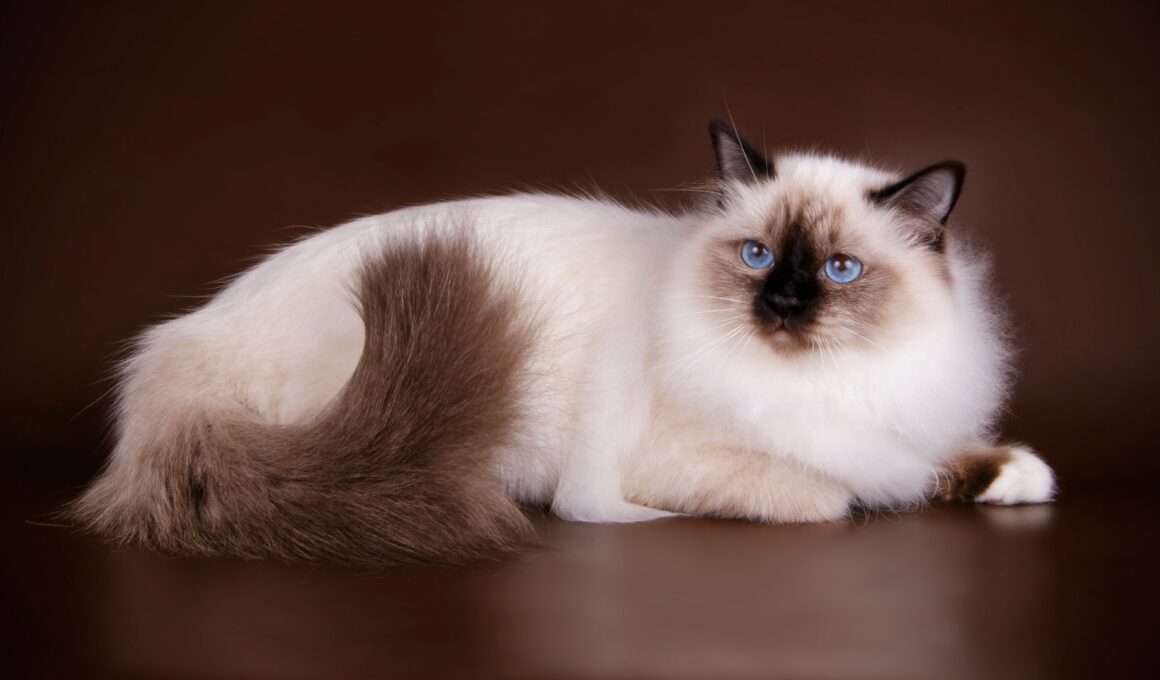Feeding ragdoll cats and kittens is like feeding any cat and is highly important for the health and happiness of your pet. It is crucial to ensure that your cat gets a balances and nutritious diet in order to ensure that it is illness free, that it has healthy fur and skin, and that it has a long and happy life. Here we will look at how to select food for your ragdoll cat or kitten and how to feed it.
Ragdoll Kittens
To start with you should feed your ragdoll kittens only breast milk for at least the initial four or five weeks of their lives. This milk provides a special cocktail of all the nutrients and substances your cat needs to grow into a healthy adult and cat food at this point is no substitute – breast milk even contains vital antibodies to help prevent disease.
After this point you can then start supplying additional substance which must be easy to digest such as mixed canned food with warm water or replacement milk (not cow’s milk which can cause indigestion in ragdoll kittens).
Cat Food
Once your cat reaches around ten weeks old it should be ready to eat dry and canned food and you can start by selecting a brand of cat food from a pet shop. Choosing the brand you want for your cat however is a difficult process and includes many factors. As a rule look for the brand that provides the most nutrients and minerals – just like humans cats require protein, minerals and vitamins and these will help to keep them healthy. If you are unsure which is the best brand, speak with your vet and they should be able to tell you.
Dry, Wet and Moist Foods
As a rule you can categorise cat food as either dry, wet or moist based on consistency. Of these it is generally better to choose dry cat foods for your older ragdoll cat as they have the added benefit of working your cat’s jaw muscles and their digestion. At the same time you can leave dry cat food out for longer and it will be possible for your pet to nibble them as they please – unlike wet or moist cat food which is more likely to harden and become less pleasant after a few hours. Wet foods also tend to contain more fat and so are not as useful for dieting cats.
Tips
Snacks: Feeding your cat snacks from the dinner table is okay but don’t let these replace your cat’s normal diet – cat food is balanced for a cat’s diet specifically and they won’t be able to get all the same benefit from human food.
Supplements: Like humans, cats too can supplement their diet with health supplements. A good one is cod liver oil which will help to provide your cat with essential oils to help keep their mood high, their skin healthy, their joints supple, and their brain active.
Chocolate: While you might be tempted to share your chocolate or ice cream with your cat this is a bad idea. Cats are much smaller than us and so a small amount of chocolate can leave excessive sugar in their system and be highly dangerous. At the same time cats are relatively prone to diabetes (though interestingly cats can recover from diabetes unlike humans!) so you should avoid giving them sugary foods.
Drinks: Your cat can drink water or milk, but a tip is to make sure to use glass or china bowls as cats do not like the smell of plastic or metal! Make sure though to replace your cats water regularly to avoid it becoming stagnant.
Salt: If your cat eats something they shouldn’t, then you may need to make them vomit. They may do this themselves by eating grass, but to achieve it yourself you can try feeding your cat a saline solution (water and salt) by squirting it into their mouth with a syringe.
Flies: Flies can contaminate your cat’s food if it is left out all day, so make sure to cover it up if your cat isn’t going to be eating for a while.
Addiction: If you decide to give your cat moist food as a treat then be warned that this can cause your cat to become addicted and to refuse to eat other food. Make sure you are strict with your cat and if it gets hungry enough it will eat what it is presented with.
Obesity: While you might want to spoil your ragdoll obesity is a serious issue in pets as it is in humans. Avoid letting your cat get over weight or it can cause diabetes, joint problems, depression and a range of other issues. You have to be cruel to be kind!





Hi, can u tell me what the temperature of a ragdoll should be, how do I know if he has a temp, do their ears get hot or nose or what please, and how do I take the temperature. My cat has lost his voice today! Thanks heaps, Eve
How much cat food should they have and how often?When? What brands?
Big ragdolls who love to eat! How much and which foods will be ok for them?
Great article. Did not know you could give cats cod liver oil or about the salt trick.